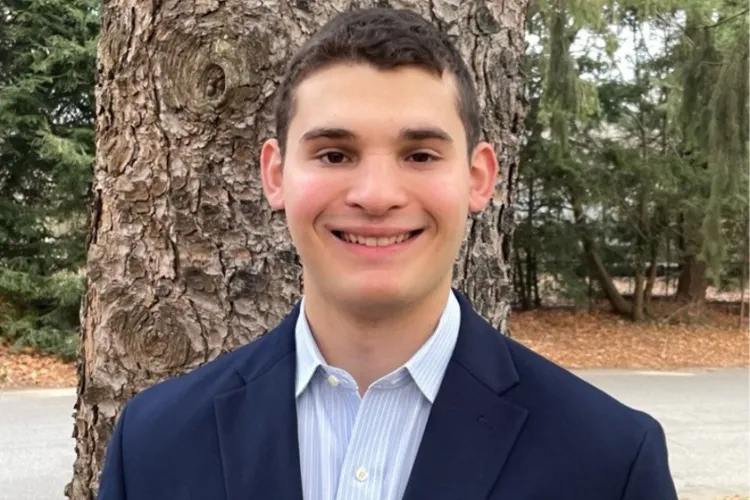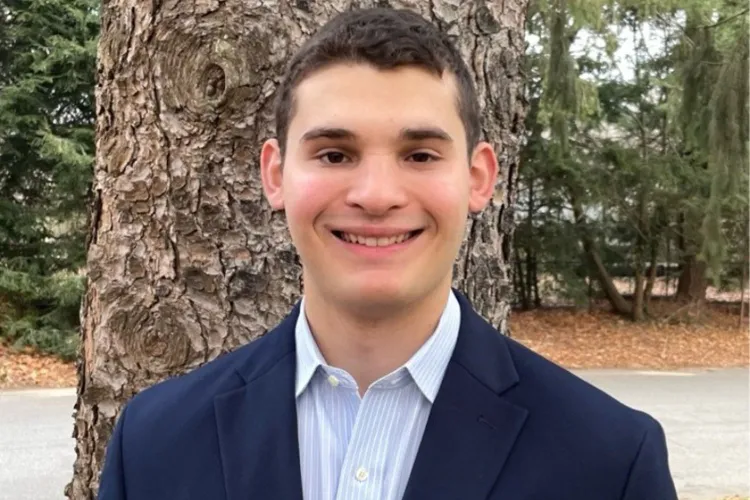Ohio State University Student William Meyers, 19, Found in Ohio Stadium, Cause of Death Confirmed as Suicide
William Meyers, a 19-year-old accounting student at Ohio State University, died by suicide after jumping inside the school’s stadium on September 26, 2025, according to an autopsy report released by the Franklin County Coroner’s Office and obtained by PEOPLE.

The morning of Friday, September 26, began like many others for the Ohio State community — the stadium empty, the autumn air crisp, and students starting their day. But shortly after 9:50 a.m., a call came in to the Columbus Division of Fire regarding a person in distress inside Ohio Stadium. By 9:56 a.m., first responders had arrived and located Meyers unresponsive. The coroner later confirmed the manner of death as suicide.
Meyers was from Fairfield, Connecticut, a third-year accounting major at Ohio State who friends say was full of potential, kindness, and energy. On his LinkedIn page, Meyers described his guiding principles as respect, ethics, improvement, and integrity. He listed hobbies that showed a bright, curious spirit — playing word games, performing magic tricks, and coaching youth sports. He and his brother co-founded a charity called Let’s Play 2, which collected and donated sports equipment to kids in need throughout their community.
In a statement following the tragedy, Ohio State University confirmed Meyers’ identity and extended condolences to his family and friends. The university said no foul play was suspected and that there was no ongoing threat to the campus community. “We are heartbroken by the loss of one of our own,” a spokesperson said, emphasizing the availability of counseling and crisis support services for students and staff.
For those who knew him, the confirmation of suicide added another layer of grief to an already heartbreaking loss. Meyers’ friends, professors, and fraternity peers described him as dependable and quietly ambitious, someone who pushed himself but was always quick to help others. The setting of his death — within Ohio Stadium, a place often associated with celebration, unity, and school pride — has amplified the sense of sorrow and introspection across campus.
In the days following his death, tributes began to pour in from classmates and hometown friends. Meyers’ alma mater, Fairfield Ludlowe High School, released a statement calling him “a bright light with a generous heart.” Many who had worked alongside him in his Let’s Play 2 initiative shared stories of his commitment to giving back, remembering how he collected baseball gloves, soccer cleats, and basketballs from the community so that children without resources could play the sports they loved. “He believed every kid deserves to play,” one volunteer wrote.
Meyers had also secured a 2026 summer internship with Deloitte in Stamford, Connecticut — a sign of the promising career he was building. His future seemed certain, structured, and full of direction. Those who knew him said that’s what made the news of his death so stunning — there were no visible signs of struggle.
Mental-health experts often point out that such tragedies rarely have a single cause. Suicidal crises can develop from a combination of factors — internalized pressure, unspoken distress, or moments of hopelessness that go unnoticed by even close friends. The university’s response has focused on reinforcing the importance of mental-health outreach, empathy, and access to immediate care.
The location of Meyers’ death — Ohio Stadium, known as “The Shoe” — carries heavy symbolism. It’s the heart of Buckeye pride, a place where over 100,000 fans cheer for their team, now marked by a somber reminder of unseen pain. The tragedy comes just over a year after another suicide at the same stadium in 2024, when a 53-year-old woman died during commencement exercises. For students and faculty, the repetition of such events at such a cherished site has reignited urgent discussions about campus mental-health awareness.
In Fairfield, Connecticut, neighbors have rallied around the Meyers family. Candlelight vigils were held at the local high-school athletic field where William once played, and community members have pledged continued support for the Let’s Play 2 foundation he helped create. The charity, still active, now serves as both a memorial and an extension of his spirit. One of the organization’s board members described him as “the kind of person who didn’t just talk about helping — he did it.”
Back in Columbus, Ohio State continues to grieve and reflect. Students have created makeshift memorials on the campus oval, leaving handwritten notes and flowers. The university’s Office of Student Life expanded outreach programming and reminded students of the national 988 Suicide and Crisis Lifeline, available 24/7. The campus community has been urged to check in on one another — even when someone seems fine on the surface.
In tragedies like this, experts say awareness is key. Dr. Michael Nadorff, a psychologist specializing in suicide prevention in university settings, told CNN that young adults in competitive academic environments often internalize stress and emotional fatigue. “They’re high achievers surrounded by other high achievers,” he explained. “The culture of constant performance can make it harder for students to ask for help.”
Meyers’ story now stands as both a memorial and a call to action — a reminder of how vital it is to listen, to ask questions, and to be there for those who may be quietly struggling. Friends describe him as warm, funny, and optimistic — the kind of friend who showed up for everyone else, even when he might have needed someone to show up for him.
The Meyers family has not released a public statement beyond confirming their profound grief and appreciation for the outpouring of support. Local media in Fairfield reported that family members have asked for privacy as they navigate this devastating loss while continuing the work of Let’s Play 2 in his honor.
As the autumn semester continues, the shadow of this tragedy remains over Ohio State. The stadium, usually a place of pride and unity, now also stands as a quiet reminder of fragility — of how many lives can be touched by one young man’s absence. University counselors have emphasized that healing will take time and that grief, when shared, can become a catalyst for empathy and prevention.
The death of William Meyers is not simply a university news story. It’s a human story — one about pressure, silence, and the importance of seeing beyond appearances. It speaks to a broader truth: that mental health is not a private battle, but a collective responsibility.
For students at Ohio State and across the country, his name will now be associated not with how his life ended, but with how he lived — as a brother, a volunteer, a leader, and a friend. And as the community mourns, it also recommits to the work of ensuring that no student feels alone in their struggle again.
If you or someone you know is struggling or in crisis, you can call or text 988 to reach the Suicide and Crisis Lifeline for free, confidential support 24/7.


